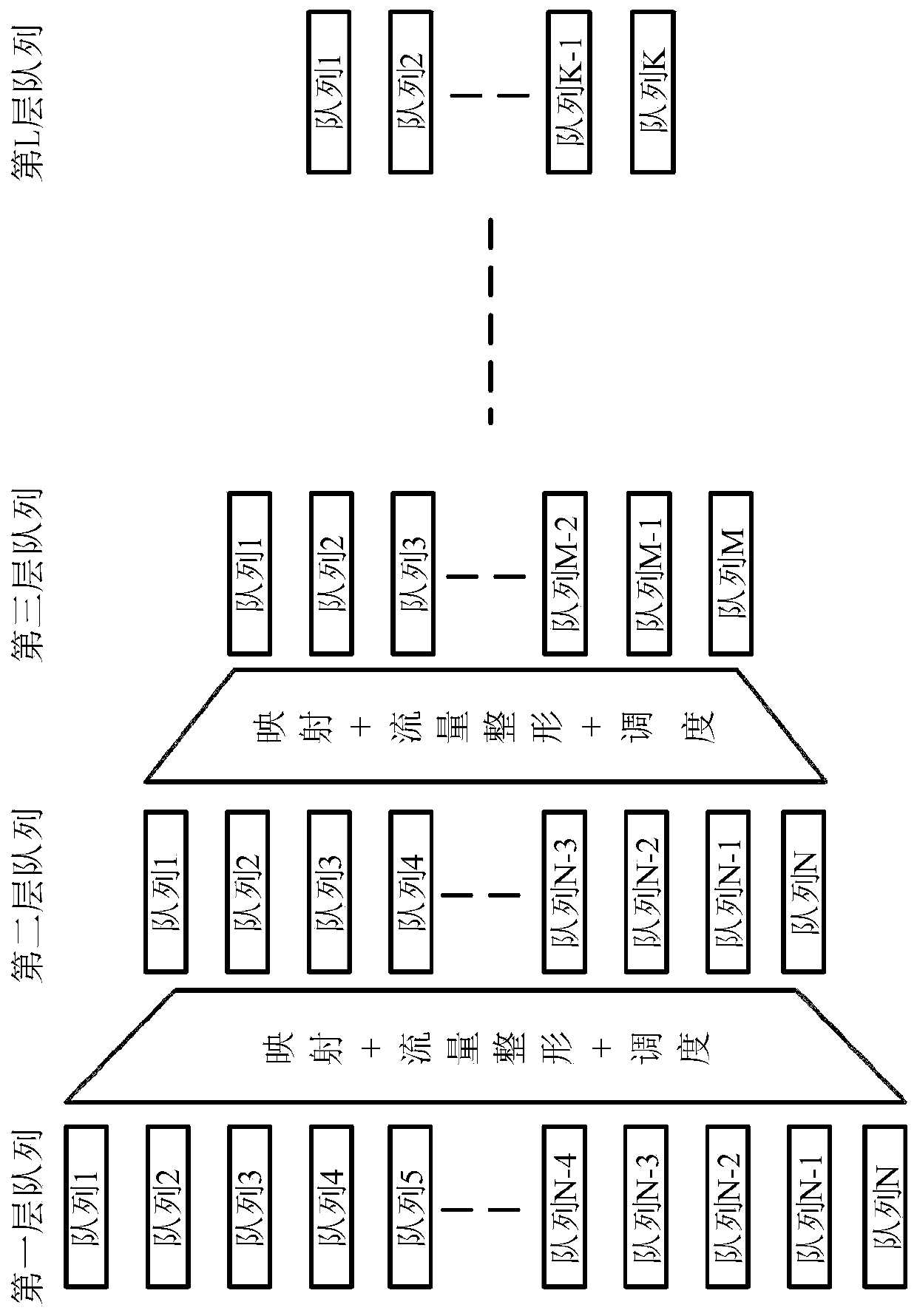Qos implementation method and system based on clustering design
A technology for implementing a system and an implementation method, which is applied in the field of congestion management of network switching chips, can solve the problems of complex linked list maintenance, insufficient control of different data flows, and limited network service quality, and achieves high network service quality and precise control of data flow. , the effect of rapid scheduling
- Summary
- Abstract
- Description
- Claims
- Application Information
AI Technical Summary
Problems solved by technology
Method used
Image
Examples
Embodiment 1
[0059] see image 3 As shown, Embodiment 1 of the present invention provides a Qos implementation method based on clustering design, including the following steps:
[0060] S1. Generate multiple cluster layers, each cluster layer includes multiple ordered clusters, and each cluster in the upper cluster layer serves as a node, mapping multiple different continuous clusters in the lower cluster layer.
[0061] Taking four layers as an example, four cluster layers are generated, which are named L0 layer, L1 layer, L2 layer and L3 layer accordingly from bottom to top. There is 1 cluster in the L3 layer, and 1 cluster in the L3 layer is used as a node to map all the continuous nodes in the L2 layer. There are a total of E clusters in the L2 layer, and each cluster in the L2 layer is used as a node to map D consecutive clusters in the L2 layer. There are D*E clusters in the L2 layer; each cluster in the L2 layer is used as a node to map consecutive C clusters in the L1 layer, and t...
Embodiment 2
[0072] see figure 2 As shown, on the basis of Embodiment 1, the queues to be scheduled in the existing quality of service / layered quality of service Qos / Hqos structural framework are allocated to the underlying clusters in the manner that multiple queues correspond to one cluster layer, needs to confirm the relationship of the queue, and allocate according to the relationship of the queue, which includes:
[0073] According to the corresponding relationship of the first layer of queues in the existing Qos / Hqos structural framework, confirm the mapping relationship between the required corresponding clusters.
[0074] For example: there are 60 queues, and it is necessary to select from 60 queues in one scheduling; there are 3 cluster layers of bottom layer, middle layer, and top layer, and there are 12, 3, and 1 clusters from the lower layer to the upper layer.
[0075] Then its possible clustering methods are:
[0076] Correspond the 60 queues to the bottom cluster in the w...
Embodiment 3
[0098] On the basis of Embodiment 1, the priority level of the allocated cluster, whether it is qualified, the scheduling mode of the cluster, and the state in the scheduling mode are stored. The scheduling mode includes DWRR / RR scheduling and SP scheduling.
[0099] After the queue is allocated, before scheduling according to the priority level, it is preferred to store the priority level of the cluster allocated to the queue, whether it has qualifications, the scheduling method of the cluster, and the state in the scheduling mode. The priority level of the queue, so that the scheduling of the queue in the cluster layer corresponds to the scheduling of the cluster.
[0100] It should be noted that the priority level is the priority level of the cluster corresponding to its assigned queue, which depends on the cluster corresponding to all queues, and the priority of the queue is selected in the next scheduling.
[0101] For example, a L0-level cluster contains 16 queues, and a...
PUM
 Login to View More
Login to View More Abstract
Description
Claims
Application Information
 Login to View More
Login to View More - R&D
- Intellectual Property
- Life Sciences
- Materials
- Tech Scout
- Unparalleled Data Quality
- Higher Quality Content
- 60% Fewer Hallucinations
Browse by: Latest US Patents, China's latest patents, Technical Efficacy Thesaurus, Application Domain, Technology Topic, Popular Technical Reports.
© 2025 PatSnap. All rights reserved.Legal|Privacy policy|Modern Slavery Act Transparency Statement|Sitemap|About US| Contact US: help@patsnap.com



